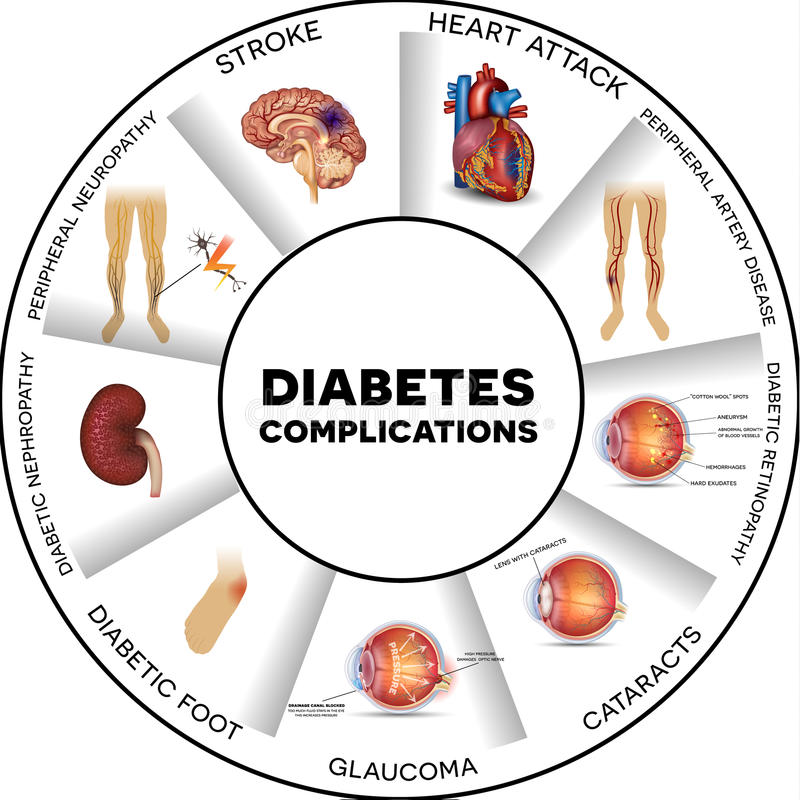DIABETES:A DEADLY AND SILENT KILLER
Diabetes is a disease that occurs when your blood glucose, also called blood sugar, is too high. Blood glucose is your main source of energy and comes from the food you eat. Insulin , a hormone made by the pancreas , helps glucose from food get into your cells to be used for energy. Sometimes your body doesn’t make enough—or any—insulin or doesn’t use insulin well. Glucose then stays in your blood and doesn’t reach your cells.
Over time, having too much glucose in your blood can cause health problems . Although diabetes has no cure, you can take steps to manage your diabetes and stay healthy.
Sometimes people call diabetes “a touch of sugar” or “borderline diabetes.” These terms suggest that someone doesn’t really have diabetes or has a less serious case, but every case of diabetes is serious.
What are the different types of diabetes?
The most common types of diabetes are type 1, type 2, and gestational diabetes.
Type 1 diabetes
If you have type 1 diabetes, your body does not make insulin. Your
immune system attacks and destroys the cells in your pancreas that make insulin. Type 1 diabetes is usually diagnosed in children and young adults, although it can appear at any age. People with type 1 diabetes need to take insulin every day to stay alive.
Type 2 diabetes
If you have type 2 diabetes, your body does not make or use insulin well. You can develop type 2 diabetes at any age, even during childhood. However, this type of diabetes occurs most often in middle-aged and older people. Type 2 is the most common type of diabetes.
Gestational diabetes
Gestational diabetes develops in some women when they are pregnant. Most of the time, this type of diabetes goes away after the baby is born. However, if you’ve had gestational diabetes, you have a greater chance of developing type 2 diabetes later in life. Sometimes diabetes diagnosed during pregnancy is actually type 2 diabetes.
Other types of diabetes
Less common types include
monogenic diabetes, which is an inherited form of diabetes, and
cystic fibrosis-related diabetes .
How common is diabetes?
As of 2015, 30.3 million people in the United States, or 9.4 percent of the population, had diabetes. More than 1 in 4 of them didn’t know they had the disease. Diabetes affects 1 in 4 people over the age of 65. About 90-95 percent of cases in adults are type 2 diabetes. 1
Who is more likely to develop type 2 diabetes?
You are more likely to develop type 2 diabetes if you are age 45 or older, have a family history of diabetes, or are overweight. Physical inactivity, race, and certain health problems such as high blood pressure also affect your chance of developing type 2 diabetes. You are also more likely to develop type 2 diabetes if you have
prediabetes or had gestational diabetes when you were pregnant. Learn more about risk factors for type 2 diabetes.
What health problems can people with diabetes develop?
Over time, high blood glucose leads to problems such as
heart disease
stroke
kidney disease
eye problems
dental disease
nerve damage
foot problems
You can take steps to lower your chances of developing these
diabetes-related health problems .
Diabetes, indeed, can have severe, even deadly consequences if not properly managed. Silent, because the damage often proceeds without obvious symptoms until complications appear. It is crucial to decrease risk through a healthy lifestyle and regular check-ups. To know more, learn more about type 1 diabetes by JDRF, where you'll find extensive information on diabetes, its risks, and management strategies. Through research and advocacy, JDRF strives to arm you with knowledge to live healthier and longer.
Thanks for sharing this informative post about diabetes! It’s crucial to understand the different types and the risks associated with high blood sugar. For those looking for natural ways to manage blood sugar levels, I recently came across this popular thread on Berbaprime review , a berberine supplement that help support metabolic health. It’s been getting positive feedback for its potential benefits in managing blood glucose levels. Definitely worth exploring alongside dietary changes and lifestyle adjustments!